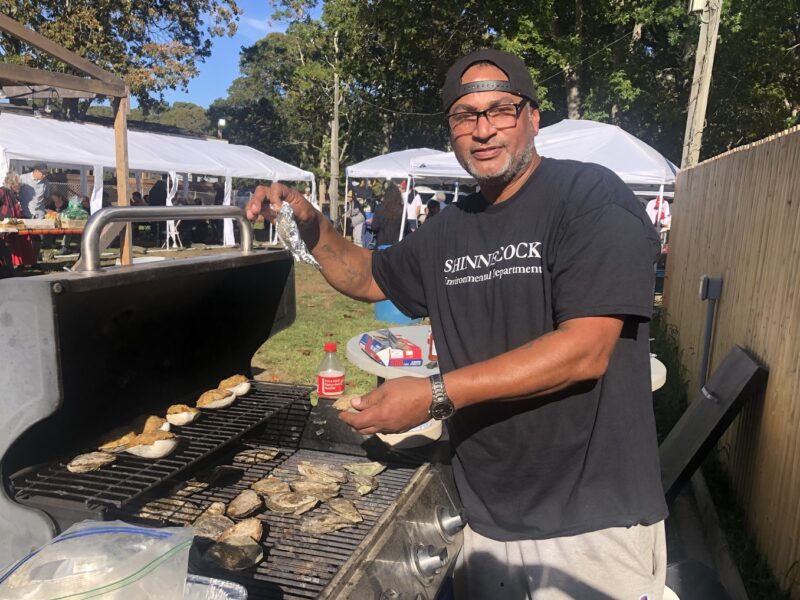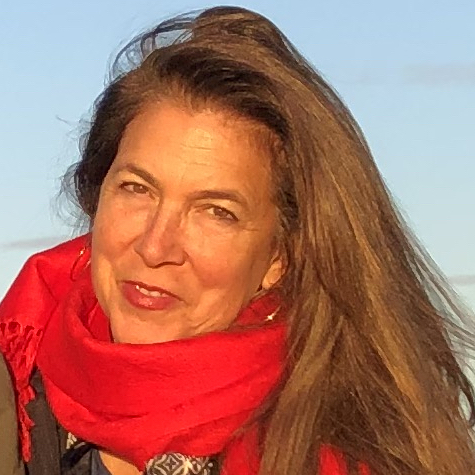

“When we show our respect for other living things, they respond with respect for us.” — Arapaho proverb
The Shinnecock tribe was living sustainably on Long Island long before the subject was taught at universities, argued about between nations and there was a monthly column about Sustainable Living. After 13,000 years here, it’s in their DNA. With the quickly spiraling effects of climate change, this Thanksgiving would be a good time to take some lessons in sustainability from Native Americans.
As a mariner tribe spanning a large swath of eastern Long Island, the Shinnecock people have always lived in harmony with the ocean, respecting “grandmother Earth” and her resources. For most of their history these expert fishermen, hunters, farmers and whalers had an ecological footprint that was practically invisible.
The Pilgrims, a.k.a. colonizers, on the other hand, viewed nature as a commodity. The moment they stepped foot in the New World, they treated the land as a thing to be tamed and subjugated.
“There’s always been a utilitarian attitude towards nature, where attention is paid to exploitation of resources,” points out Jenna Gray Eagle, Indigenous gardener and environmental justice advocate.
The story of Thanksgiving, in which the Pilgrims sat down with American Indians to peacefully celebrate their first harvest together, is a flawed narrative if ever there was one. It’s true that when colonists on the East End first arrived, the Shinnecock showed them how to hunt, fish and plant corn. They taught them everything about survival, except how to take care of the land itself.
The rest of the Massachusetts Thanksgiving story has a few different updated versions, none of which would look good in a Norman Rockwell painting. We now know that the colonists raided and massacred Native American villages throughout the Northeast, and then pillaged their land. To be fair, land was easy to steal from a culture who believed owning property made about as much sense as owning the wind.
“We were taught that the air, the water and the land belongs to everyone,” says Darlene Troge of Shinnecock Kelp Farmers.
What have the newbies done with this looted land? The first East End settlers over-whaled, over-fished and over-tilled the land. Flash forward to today, and we’ve stepped up our game, over-polluting, over-fertilizing and way over-estimating the lands’ ability to handle constant development.
But enough about reality.
Assuming somebody, somewhere sat down with someone peacefully over a meal, the one thing we do know is what they would have eaten, and that they were following the basic scientific principles of sustainability: Choose local so there’s no need for a lot of plastic packaging and fuel for shipping long distances. Use the whole food (or as much of it as you can), to avoid waste. Eat meat with a lower carbon footprint, i.e. one that doesn’t emit a lot of CO2 and methane into the atmosphere.
The Shinnecock also practiced a sometimes overlooked aspect of environmentalism — showing gratitude for our natural resources. While more generally considered a harvest meal, giving thanks for the Earth’s bounty is a deeply ingrained tribal tradition.
The meal itself would have looked a lot like our fairy tale image of Thanksgiving. (Pilgrims were, after all, the guests at their proverbial table.) They ate local turkey, potatoes, pumpkins, Brussels sprouts and bitter cranberries, all of which we can get locally today.
Avoiding red meat at a Shinnecock-style Thanksgiving should be easy. On the East End, there’s plenty of local venison, duck and turkey available. When people on the reservation hunt turkey (and sometimes duck and quail), they traditionally use the whole bird.
John Boyd of Shinnecock Nation said, “The turkey, for us, was a very well-respected bird. The bones were used as whistles. We even used the feathers for fanning sacred smudge sticks to cleanse a room. Everything has a purpose.”
Turkey raised outdoors also has a fairly low carbon footprint, slightly higher than chicken, but a lot lower than beef. Local turkey is available at North Sea Farms, Mecox Bay Dairy in Bridgehampton and at farms on the North Fork.
Another popular Shinnecock food is venison, which is antibiotic free, hormone free and we know is free range. Hunting venison, as Shinnecock often do, helps cull the deer population on Long Island. For those of us who don’t have a hunting permit, the easiest way to score it is from Denise Smith, whose catering company makes venison stew and chili and deliciously spiced straight up venison. The recipe, unfortunately for me, is a well-guarded secret. If you had a family recipe handed down by tribal elders for centuries, would you give it away?
To place an order, email Denise at drsm60@hotmail.com.
Like Indigenous people throughout the Americas, Shinnecock have always worshipped corn and it features prominently in their harvest meal.
Case in point, “The Three Sisters.” This combination of corn, beans and squash is the perfect trifecta of nutrition. When European colonists saw Native Americans putting three different types of seed in one hole in the ground, they assumed that the locals didn’t know how to farm. Indigenous people then had to teach them that the plants develop a symbiotic relationship. The squash leaves offer shade to the beans, and the corn shields the other vegetables from the sun. Like its cousin succotash, we can make it with all local ingredients — dried corn, cranberry beans sold at Green Thumb in Water Mill, and butternut squash, which is in season in November.
Having depended on the ocean to survive, shellfish have always been a primary source of protein on Shinnecock territory, and part of the harvest feast. They also naturally clean polluted waters and act as a buffer against coastal erosion.
Central to their way of life are clams, which are used for everything from stuffed clams and chowder, to creating decorative jewelry from the shells.
For easy harvesting, tribal photographer Rebekah Wise explains, “We’ll pick up the occasional clam rake, which for no known reason is called the ‘Shinnecock rake.’ But we like to use our feet. It’s just much more fun.”
Because Shinnecock are considered “first contact” Indians, those who’ve lived among white people much longer than tribes out west, their recipes tend to be more integrated with European culture. The classic clam pie, for example, can be made environmentally because almost all its ingredients are local (except for the Betty Crocker Bisquick crust).
Oysters, aside from being my favorite treat at the Shinnecock Oyster Festival, are a powerful nature-based solution to fighting the effects of climate change. They filter out excess nitrogen, CO2 and pollutants from the water and like clams, act as a natural buffer against storm surges. While oysters do a lot to clean the waters, Troge points out that the bays will never be really clean if we don’t upgrade outdated septic systems and stop using chemical fertilizer that leaches toxic nitrogen into the waterways.
For more information on how oysters clean our waters, and joining a group of oyster gardeners, go to 27East.com and find my 2022 column “Oysters: Climate Warrior In A Shell.”
One ingredient that’s unmistakably a part of a Shinnecock Thanksgiving is community. Or what Wise describes as, “Good medicine.” Not the OTC prescription type, but a feeling one gets. “Maybe you sage a room with smudge sticks. Maybe it’s just hanging out with your peeps… the people you love. Family healing stuff.”
This holiday, let’s use some of that native wisdom and work to restore our relationship with the planet. And with each other.
Amen. Shalom. Namaste. Aho.
 More Posts from Jenny Noble
More Posts from Jenny Noble